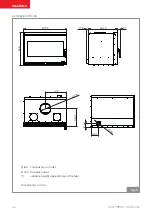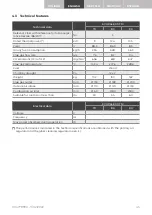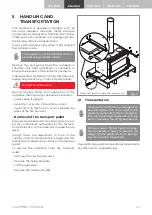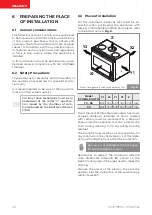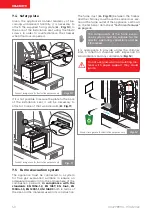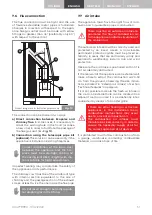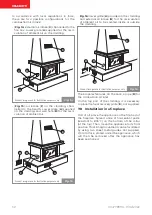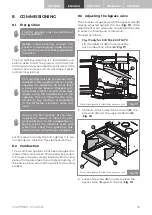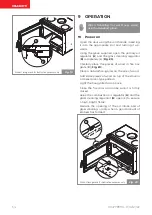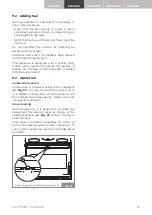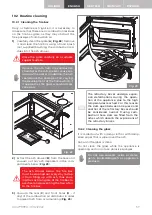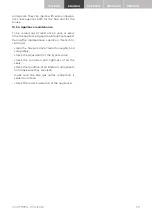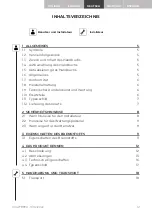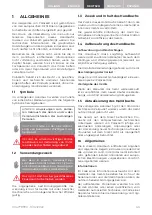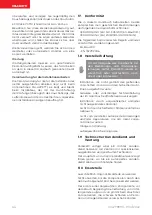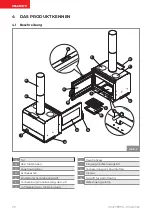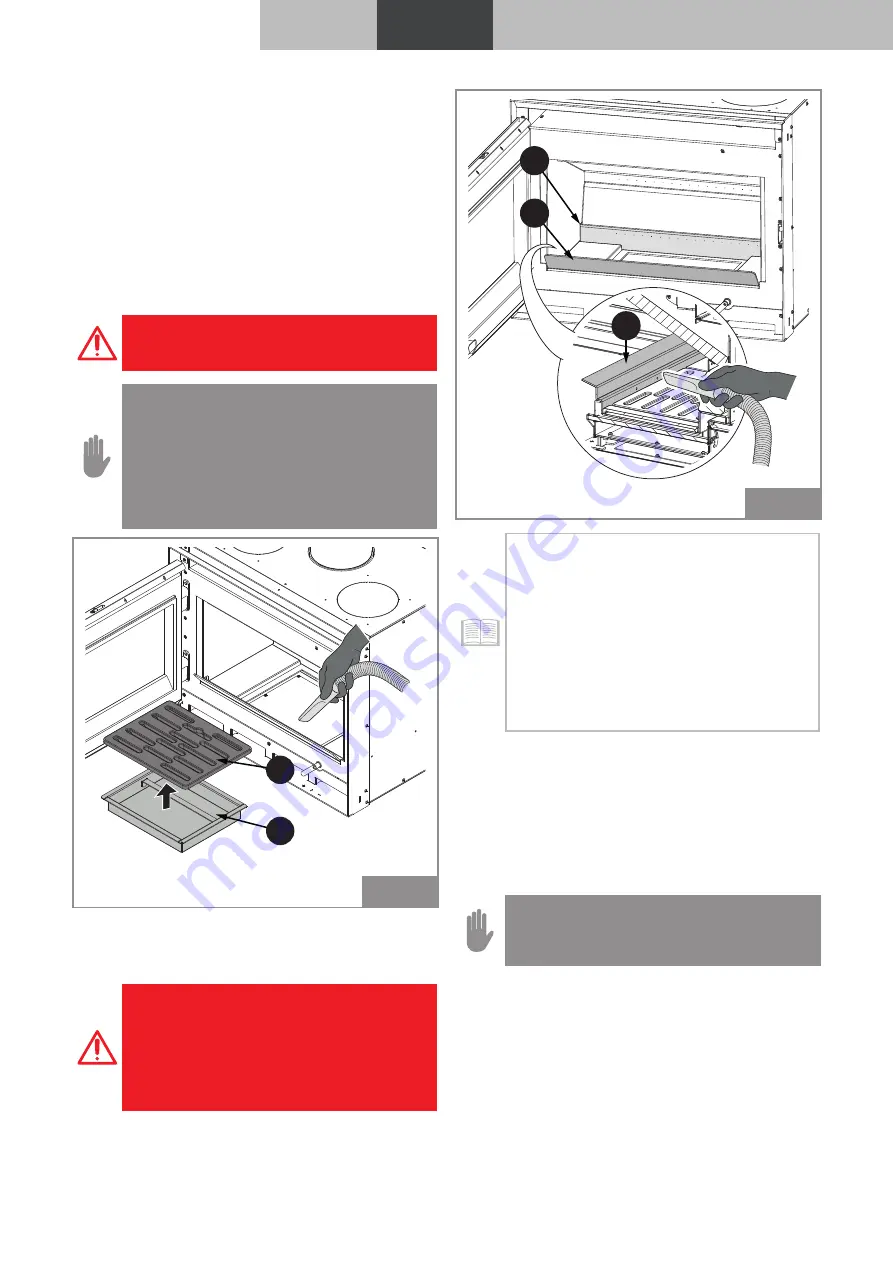
004778990 - 11/02/2022
57
ITALIANO
ENGLISH
DEUTSCH
FRANÇAIS
ESPAÑOL
10.2 Routine cleaning
10.2.1 cleaning the fire box
Daily, or before each ignition, it is necessary to
make sure that there are no combustion residues
on the fire box grate, as they may obstruct the
free passage of combustion air.
1)
Carefully clean the grate (
a
) (
Fig. 22
). Remove
it and clean the fire box using a hand brush
(not supplied) brushing the combustion resi-
dues into the ash drawer.
Place the grate carefully on a suitable
support surface.
Remove the ash from the combustion
chamber as the salts present cause cor-
rosion of the metal. In addition, the ash
could block the passage of air, varying
the development of the flame which, if
it approaches the glass, would increase
corrosion.
B
A
Fig. 22
2)
Extract the ash drawer (
B
) from the base and
vacuum out any ash deposited in the com-
partments below (
Fig. 23
).
The ash drawer below the fire box
must be emptied out every day to stop
it from filling up with ash, thus caus-
ing the cast iron grate of the fire box to
overheat and preventing the flow of air
to the fire box.
3)
Vacuum the rear (
c
) and front holes (
D
- if
any) of the combustion air distributor in order
to prevent ash from accumulating (
Fig. 23
).
C
D
D
Fig. 23
The refractory bricks undergo expan-
sion deformations during the opera-
tion of the appliance, due to the high
temperatures reached. For this reason
the slots open between one piece and
another of the refractory bricks should
be considered normal. During com-
bustion these slots are filled from the
ashes which absorb the expansions of
the refractory bricks.
10.2.2 cleaning the glass
It is carried out with a damp cloth or with damp-
ened paper that is wiped over the ash.
Rub until the glass is clean.
Do not clean the glass while the appliance is
operating and do not use abrasive sponges.
Do not use solvents, acids or deter-
gents, liquid detergents or aggressive
products.


